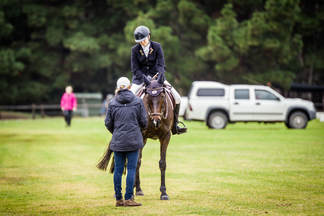
Whenever we take a clicker and a small bucket of food rewards to a show it seems to generate a certain degree of scepticism and even disdain. We’ve been asked, “What happens when what’s in the bucket runs out?” and “So, I suppose you’ll have to carry that bag of treats around forever.” I’ve really never understood the resistance to positive reinforcement and I think it stems from a lack of understanding. There are several myths surrounding its use and (just like the theory of dominance and submission) those myths need to go the way of the flat earth theory. It’s 2017… We know stuff now!
Positive reinforcement is a form of operant conditioning and as such is just one of many tools in the horse trainers tool-kit. Like negative reinforcement, when done well it can be a useful and fundamental part of a horse’s training. When done badly it can cause the horse stress and confusion. Just like negative reinforcement, science can tell us a great deal about the best ways to use positive reinforcement and how to optimise its use.
Positive reinforcement is a form of operant conditioning and as such is just one of many tools in the horse trainers tool-kit. Like negative reinforcement, when done well it can be a useful and fundamental part of a horse’s training. When done badly it can cause the horse stress and confusion. Just like negative reinforcement, science can tell us a great deal about the best ways to use positive reinforcement and how to optimise its use.

 RSS Feed
RSS Feed
